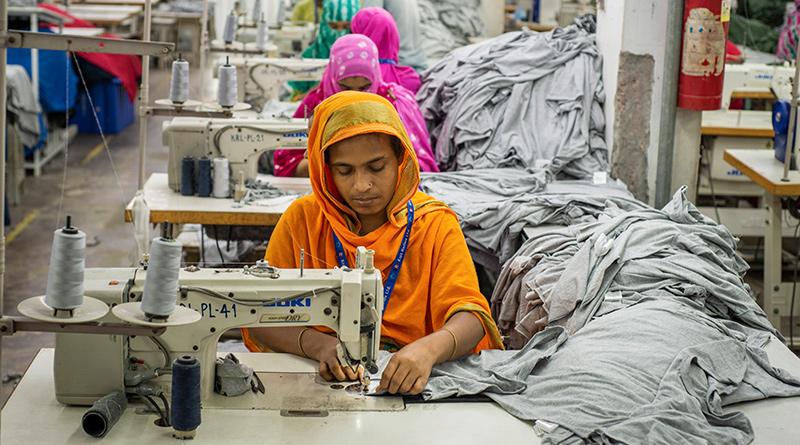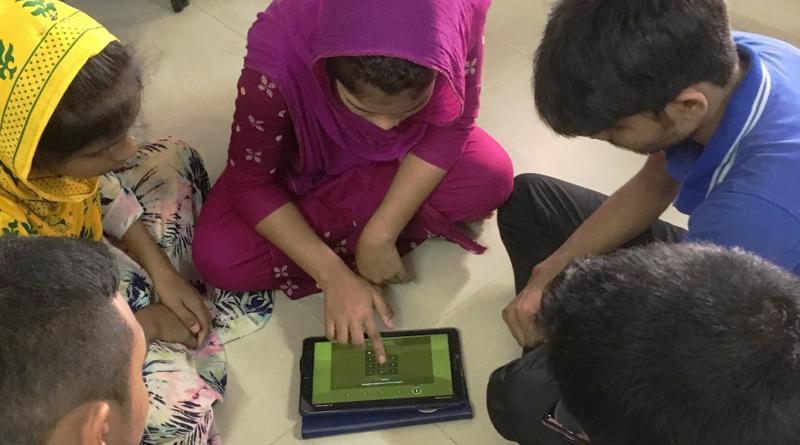Helping Garment Workers Get Paid More Reliably and Safely
The Center joins BSR to promote financial security in the global garment industry.
By: Alison Eskesen
For more than a century factories have been an entry point for women’s formal employment, particularly garment factories. This is especially true in some developing countries, where cultural barriers restrict women’s labor outside the home. Research shows that formal employment leads to greater economic empowerment. For women, that can mean delaying marriage, reducing family size, investing in education and participating in financial decision-making at home and in the community.
In 2015 garment factories employed 43 million workers in developing Asia, more than half of whom were women. Yet these same women rarely have control over their earnings. On each payday, the men in their lives—husbands, uncles, brothers—wait outside the factory gate to collect the women’s cash salaries. Carrying cash also puts them at risk of theft.
Lucky, a garment worker in Dhaka, shares an apartment with several roommates and always worries about keeping her cash wages safe. She also worries about going out in the evenings to wire money to her brother at home in her village. “As a woman it isn’t safe for me to go out at night,” she said. But with digital wages and a bank account she can send money from the safety of her apartment. “At first I didn’t like the idea of money coming from a machine,” she said, but “I am very happy with the benefits.”
Decades of research demonstrate that when women control their money, they spend it in ways that improve their family’s futures. From our partnership with Business for Social Responsibility (BSR) and its HERfinance program, we have also learned that digital wages can spur shifts in women’s financial decision-making.
BSR’s HERfinance Digital Wages program has helped Manjula, a garment worker in India, and her husband save for their children’s futures. “Previously,” she said, “we would spend our income without much forethought. I wasn’t aware of how to plan and save.” She and her husband have used the savings to help her family install a well on their farm, which helped increase the family’s income. They are also contributing to the construction of a new family home in her hometown. When that is finished, she will focus on saving for her daughter, who wants to become a doctor.
By simply changing the way in which women factory workers receive their wages, we can shift household power dynamics, advance financial inclusion and drive economic empowerment.
Tablet-based toolkit brings support and advice to factories
The success of HERfinance Digital Wages program has led us to expand and improve it. The Mastercard Center for Inclusive Growth and BSR have recently created the Digital Wage Toolkit, a tablet-based tutoring program for factory owners and workers. The goal of this open-source toolkit is to democratize access to global learning and best practices for all garment factories, starting in Bangladesh. In Bangladesh alone, more than 4 million garment workers are paid cash wages, according to estimates by the Bangladesh Garment Manufacturers and Exporters Association. Data from the Bangladesh Bureau of Statistics show that the garment sector is also the largest source of formal employment in the country, accounting for roughly 45 percent of the total workforce.
The Digital Wage Toolkit provides financial advice and planning tools via tailored and relatable videos, quizzes and animation. In addition to offering sound financial advice, the tool builds women’s confidence in using technology. For many it’s their first opportunity to use tech.
In addition to building valuable skills, digital literacy makes the transition to digital wages smoother for employers. The open-source toolkit allows employers to tap into a rich learning network without the cost of hiring an expensive international consultant. We know from the Better Than Cash Alliance that digital payroll makes good business sense. Leora Klapper, an economist at the World Bank, reported that within two years of digitizing payroll, factories in her study had slashed costs by 45 percent. This win-win scenario is why we are committed to transforming how workers in garment factories are paid.
Three major brands join Mastercard to reach workers globally
When we give women the financial reins and the know-how, they know no boundaries. That’s why Mastercard and BSR are building on the lessons from HERfinance in Bangladesh and partnering with several major global brands, including Levi’s, VF Corporation and Marks & Spencer to help improve garment workers’ financial empowerment and accelerate the transition to digital wages.
While Mastercard and the global brands will help expand the rolls of workers who are paid digitally, the Center will go global with education efforts through the Digital Wage Toolkit. By 2020 we will have the toolkit in the hands of 9,000 workers. We also intend to train factory associations, unions and local nongovernmental organizations to use the toolkit. In Cambodia alone, one of the six focus countries, we could reach up to 16,000 women garment workers in 18 months. Already in Egypt, 3,500 factory workers are receiving a combination of digital wages and education.
With continued expansion, we can empower women across the globe to put their hard-earned (digital) money to work for themselves, their families and their communities.



